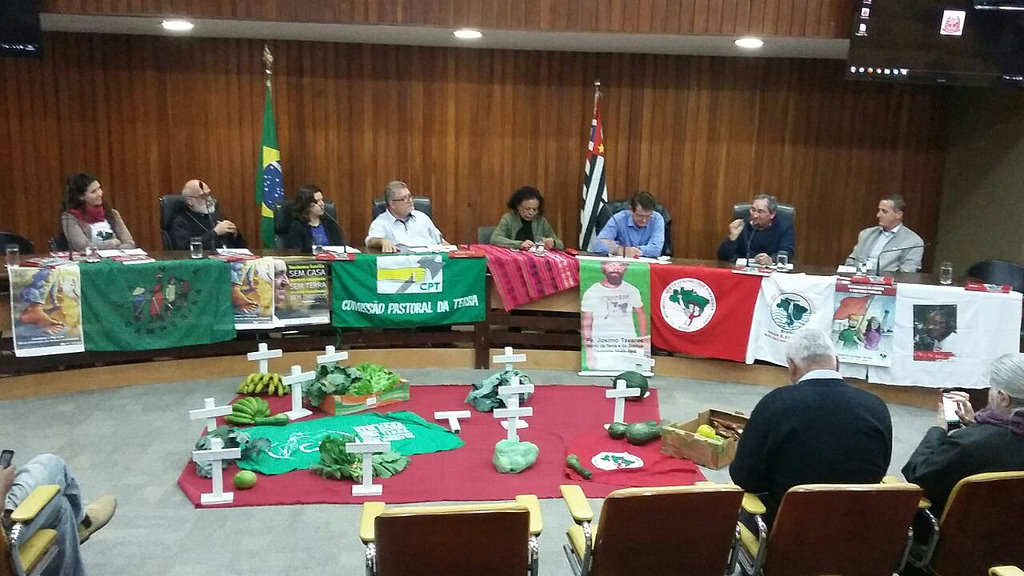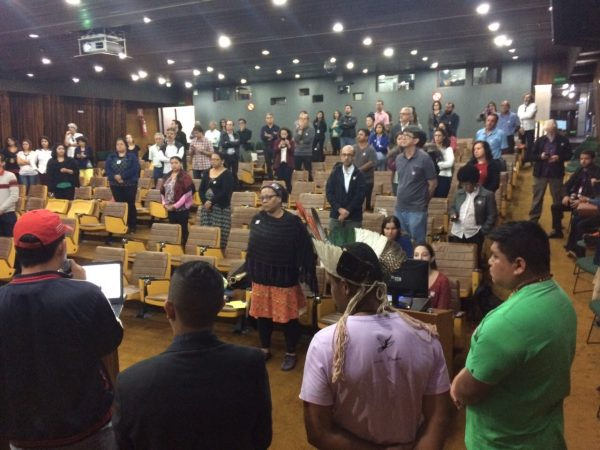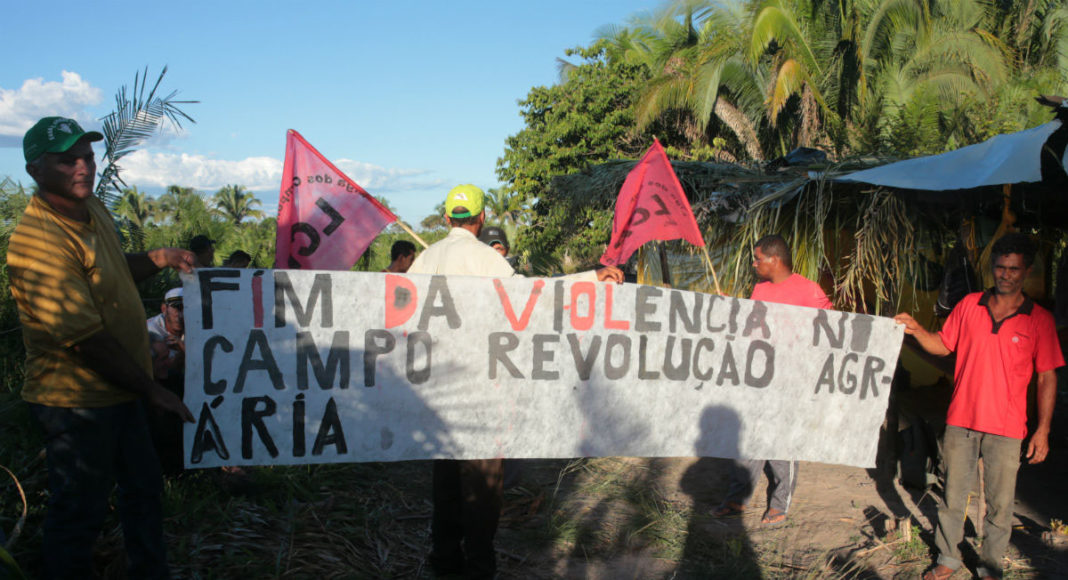
500 years of massacres
“It is with great sadness that we present this report,” said Fr Antonio Naves, a member of the CPT for São Paulo, “There is a continuing project to massacre peasants who fight for their land,” he added, recalling that land conflicts have existed ever since the arrival of the Portuguese in the 16th century. “It has been 500 years of the massacre of the weakest, the blacks and the quilombolas (descendants of former slaves). These have not been isolated cases, but a systematic killing project.”
Worsening climate of violence
According to Gilmar Mauro, one of the leaders of the Movement of Landless Rural Workers (MST), the political climate in Brazil since the removal of former president Dilma Rousseff is leading to increased violence in the countryside. “Unfortunately,” he said, “that trend is worsening.” There are now, says Mauro, more than 120,000 families living rough in Brazil. He defends the land reform as a real economic alternative, as well as being a favourable factor in promoting social justice, and says that this is not an attempt to turn back the clock with respect to the rural labour market. Technology, he says, is welcome, but it must be used in harmony with the conservation of the environment and production of healthy food. Tchenna Maso, representative of the Movement of People Affected by Dams (MAB), believes that a new model of rural violence is operating, with social movements being targeted as criminal and terrorist organisations: “Today, we confront, with regard to rights, a more refined policy of repression.” Referring to the recent massacres of rural workers in Colniza (MatoGrosso do Sul) and Pau D’Arco (Pará, and of Gamela Indians in Maranhão, all carried out with extreme cruelty, Tchenna says that all three incidents were predictable, and that the State took no action to prevent them. “We will have, for all our dead, not a minute of silence, but a life of grief”. The original article (in Portuguese) can be read here.The same CPT report is cited in a manifesto launched by the National Agroecology Organisation (ANA). “It is evident,” they say, “that priority is being given an agroexport model, with extreme concentration of land and the inclusion of properties originally seized illegally, through land disputes or stolen. This continues the perennial cycle, which is both structural and extreme in its violence, of the assassination of the rural poor, the destruction of water resources and habitats, by large landowners and agribusiness companies who violate human rights with impunity.” Graphic Trailer for “Land and Blood”, a film by Patrick Granja about the Pau D’Arco massacre. 2016, they say, saw the highest total of rural conflicts for the past 32 years. There were 1,079, almost three per day. They highlight the slaughter at Pau D’Arco of 10 landless peasants, carried out ty the military police; and the killing in a single week in July of two quilombola leaders in Bahia. They also point to the partial dismemberment of FUNAI by the government, cutting its budget and eliminating posts, especially those engaged in land demarcation. The Advocate General of the Union has also now apparently accepted a statute of limitations in the demarcation of indigenous lands which will mean ruling out evidence of the expulsions to which they were subjected prior to the adoption of the 1988 constitution. They go on to cite a number of laws which will legalize land seizures, encourage future land theft and property speculation; which legalize the sale of Brazilian land to foreigners and have cut the budgets of agencies concerned with land demarcation and indigenous and quilombola rights. Meanwhile, they claim, the Brazilian state has become more and more inactive and dilatory in investigating the murders and violence used in rural conflicts.
[i] The Cerrado is is a vast tropical savanna ecoregion of Brazil, particularly in the states of Goiás, Mato Grosso do Sul, Mato Grosso, Tocantins and Minas Gerais

